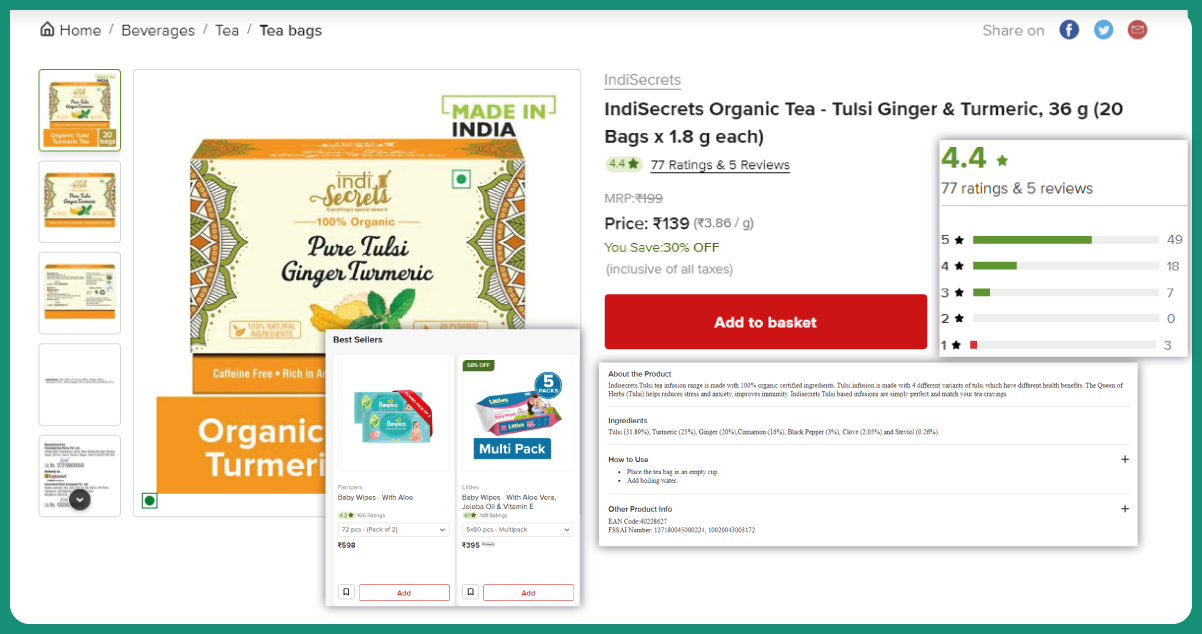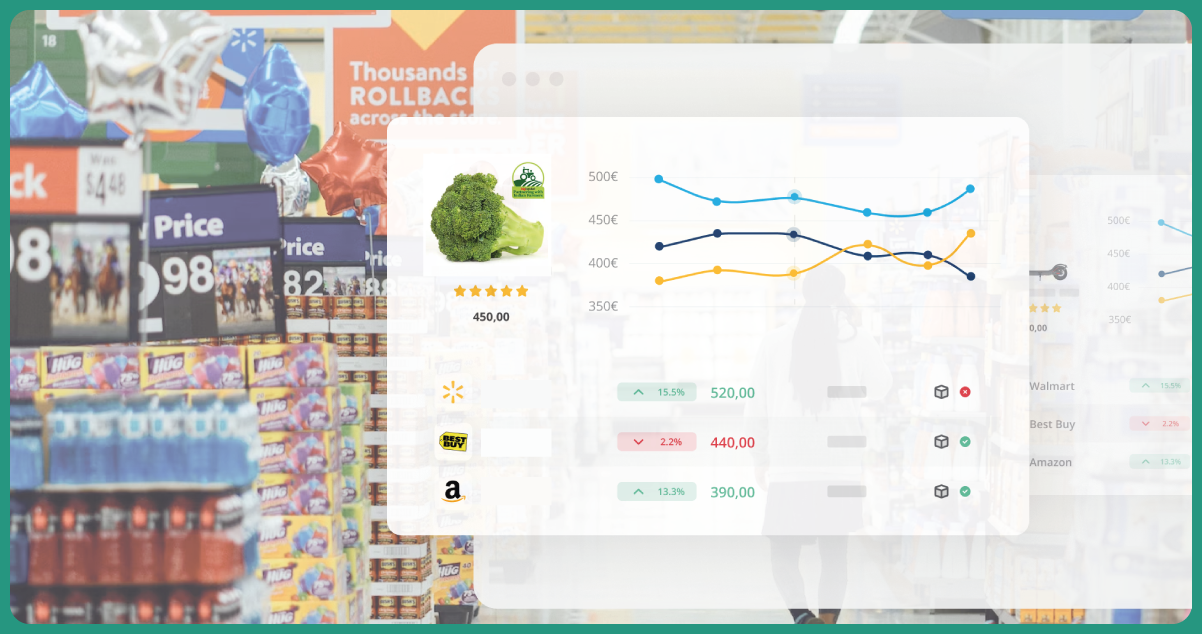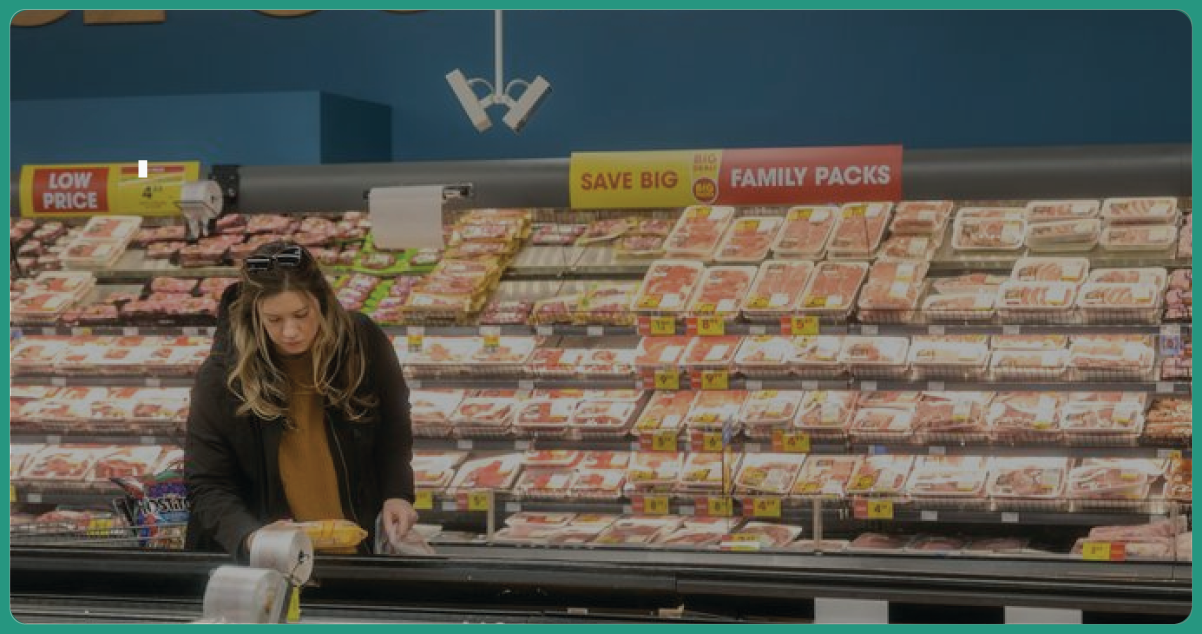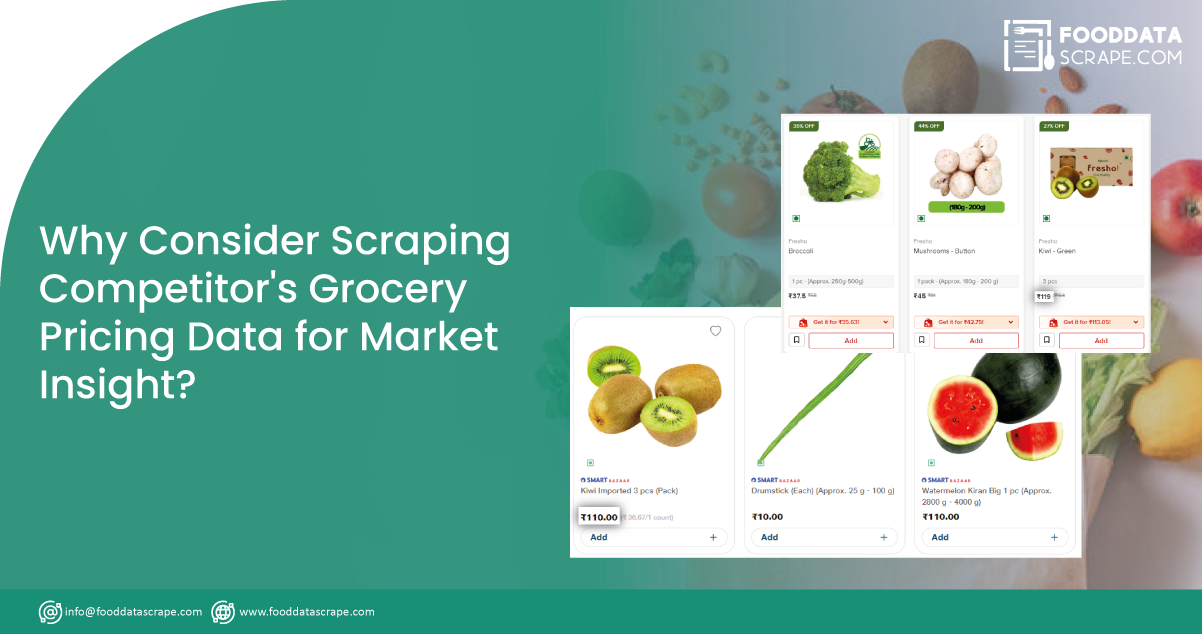In the dynamic landscape of the grocery industry, where consumer preferences, market trends, and competitive pricing strategies constantly evolve, businesses are increasingly turning to advanced techniques like grocery pricing data scraping to gain a competitive edge. This innovative approach systematically scraps competitors' grocery pricing data, unraveling a wealth of insights that can revolutionize strategic decision-making.
Grocery pricing data scraping utilizes sophisticated web scraping tools and methodologies to navigate through competitors' online platforms. The process involves extracting detailed information on product costs, discounts, promotions, and historical pricing trends. By leveraging this data, businesses gain a comprehensive understanding of market dynamics, enabling them to fine-tune their pricing strategies for optimal competitiveness and profitability.
Accurate and up-to-date pricing data holds significance in an industry where pricing directly influences consumer behavior. This proactive approach allows businesses to align their pricing structures with market demand and anticipate and respond swiftly to changes in consumer expectations.
In this introduction to grocery pricing data scraping, we delve into the transformative power of this technique, exploring how businesses can leverage scraped data to optimize product offerings, enhance strategic decision-making, and navigate the challenges of a competitive market. By embracing innovative technologies, businesses can position themselves as industry leaders, adapting to market fluctuations and meeting consumer demands with agility and precision.
List of Data Fields

Product Information:
- Product Name
- SKU or Product Code
- Description
- Brand
- Category or Department
- Weight or Quantity
- Packaging Information
Pricing Details:
- Regular Price
- Sale Price
- Discount Percentage
- Bulk or Quantity Discounts
- Promotional Offers
Inventory Status:
- Stock Availability
- Out-of-Stock Status
- Restocking Information
- Limited Stock Alerts
Product Images:
- URLs or Image Paths
- Image Alt Text
- Image Resolution and Dimensions
Customer Reviews:
- Review Ratings
- Written Reviews
- Reviewer Name
- Review Date
Product Specifications:
- Ingredients
- Nutritional Information
- Allergen Warnings
- Dietary Labels (e.g., gluten-free, organic)
Vendor or Supplier Details:
- Vendor Name
- Supplier Information
- Country of Origin
Shipping Information:
- Shipping Costs
- Delivery Timeframes
- Shipping Policies
Product Variants:
- Different Flavors or Scents
- Size Variations
- Color Options
- Other Product Customizations
Product Ratings and Popularity:
- Average Ratings
- Number of Ratings
- Bestselling or Popular Products
Website Structure Data:
- URLs of Product Pages
- Category Pages
- Breadcrumb Navigation
Discount Expiry Dates:
- Expiry Dates for Ongoing Discounts
- Limited-Time Offers
Promotional Texts and Taglines:
- Catchphrases
- Marketing Messages
- Seasonal Promotions
Understanding the Importance of Grocery Pricing Data
It is vital to balance the significance of accurate and current pricing information. It is a valuable asset, enabling companies to deftly maneuver through the intricate terrain of consumer behavior, market trends, and competitive positioning. The extraction of grocery pricing data from competitors unveils a panoramic view of the market, furnishing businesses with the insights needed to craft well-informed decisions concerning their pricing structures.
This extracted data becomes a compass, guiding businesses through the dynamic landscape of consumer preferences and industry shifts. It empowers companies to stay attuned to market dynamics, anticipate changes in consumer behavior, and strategically position themselves against competitors. As a cornerstone for informed decision-making, scraped grocery pricing data is a powerful tool that enhances pricing strategies and sharpens businesses' overall competitive edge in the ever-evolving grocery industry.
Why Scrape Competitors Grocery Pricing Data?

Competitive Pricing Strategies: Collecting competitors' grocery pricing data using grocery data scraping services provides a deep understanding of how rivals price their products. This insight allows businesses to develop competitive pricing strategies, ensuring they remain attractive to customers while maximizing profitability.
Market Positioning: Businesses gain valuable insights into their market positioning by analyzing competitors' pricing data using a grocery data scraper. This information helps position products effectively, whether as premium offerings or budget-friendly alternatives, to capture specific market segments.
Consumer Behavior Insights: Extracted pricing data unveils patterns in consumer behavior, aiding businesses in understanding how pricing influences purchasing decisions. This knowledge is essential for tailoring strategies that resonate with target audiences and drive increased customer engagement.
Optimized Product Offerings: Scraping pricing information from competitors allows businesses to optimize their product offerings. Companies can refine their inventory by identifying popular products and pricing trends, ensuring they align with customer preferences and market demands.
Strategic Marketing Initiatives: Knowledge of competitors' pricing strategies is instrumental in designing effective marketing campaigns. Businesses can craft targeted promotions, discounts, and special offers that stand out, attracting price-sensitive consumers and driving sales.
Adaptability to Market Changes: Constantly monitoring competitors' pricing data enables businesses to adapt swiftly to market changes. This agility is crucial for maintaining a competitive edge, whether responding to industry trends or adjusting strategies based on competitors' movements.
Enhanced Decision-Making: Informed decision-making is the cornerstone of successful business operations. Scraping competitors' pricing data provides the necessary insights for making data-driven decisions, whether adjusting pricing structures, launching new products, or entering new markets.
Profit Maximization: By understanding the pricing landscape within the industry, businesses can identify opportunities for profit maximization. It includes:
- Strategically adjusting prices based on competitors' movements.
- Optimizing product mix.
- Capitalizing on market gaps to enhance profitability.
The Process of Scraping Competitors' Grocery Pricing Data

- Identify Target Competitors: Identify the key competitors in the grocery industry you want to analyze. It could include major supermarket chains, online grocery platforms, or local retailers.
- Define Data Points: Clearly outline the specific data points you aim to extract. It may include product prices, discounts, promotional offers, and other relevant information that can provide a comprehensive view of competitors' pricing strategies.
- Select Scraping Tools: Choose suitable web scraping tools or frameworks that align with the complexity of the data for extraction. Popular tools include BeautifulSoup, Scrapy, or Selenium, each offering different capabilities depending on the website structure.
- Analyze Website Structure: Understand the structure of competitors' websites to tailor the scraping process accordingly. It involves identifying HTML elements, classes, and tags that house the pricing information. The goal is to ensure accurate and targeted data extraction.
- Implement Scraping Algorithms: Develop custom scraping algorithms or scripts to navigate through competitors' websites and extract the predefined data points. Depending on the chosen scraping tools, this may involve coding in Python, JavaScript, or other programming languages.
- Handle Dynamic Content: Many websites use dynamic content loading techniques, requiring additional measures to access and scrape the data. Implement solutions, such as headless browsers or AJAX handling, to retrieve dynamic pricing information effectively.
- Schedule Regular Scraping: Set up a scraping schedule to ensure that pricing data is regularly updated. It is crucial as competitors may frequently adjust prices, and timely updates enable businesses to stay informed and responsive to market changes.
- Ensure Ethical and Legal Compliance: Adhere to ethical scraping practices and respect competitors' terms of service to maintain a positive industry reputation. Being mindful of legal compliance ensures that the scraping process aligns with data protection and privacy regulations.
How Can Businesses Stay Competitive by Using Scraped Grocery Data?

Businesses can maintain a competitive edge by harnessing the power of scraped grocery data. Companies gain invaluable insights into market trends, pricing strategies, and product offerings by extracting comprehensive information from competitors' websites. This data equips businesses to refine their pricing structures, ensuring they remain attractive to consumers while maximizing profitability. Understanding the dynamics of consumer behavior through scraped data allows businesses to tailor marketing strategies and promotions, attracting price-sensitive customers and enhancing overall market competitiveness. Furthermore, by analyzing inventory levels, product popularity, and supplier details, businesses can optimize their product offerings and make informed decisions regarding stock levels and variety. The ability to adapt swiftly to changes in the grocery landscape, anticipate market shifts, and strategically position themselves against competitors is a direct outcome of utilizing scraped grocery data. Overall, the integration of scraped data empowers businesses to make informed decisions, optimize operational strategies, and navigate the competitive grocery market with agility and precision.
For profound insights, connect with Food Data Scrape. We specialize in Food Data Aggregator and Mobile Grocery App Scraping service, offering comprehensive data insights and analytics to enrich your decision-making and elevate your business strategies. Reach out today to unlock a pathway to success guided by data-driven intelligence.
























































































